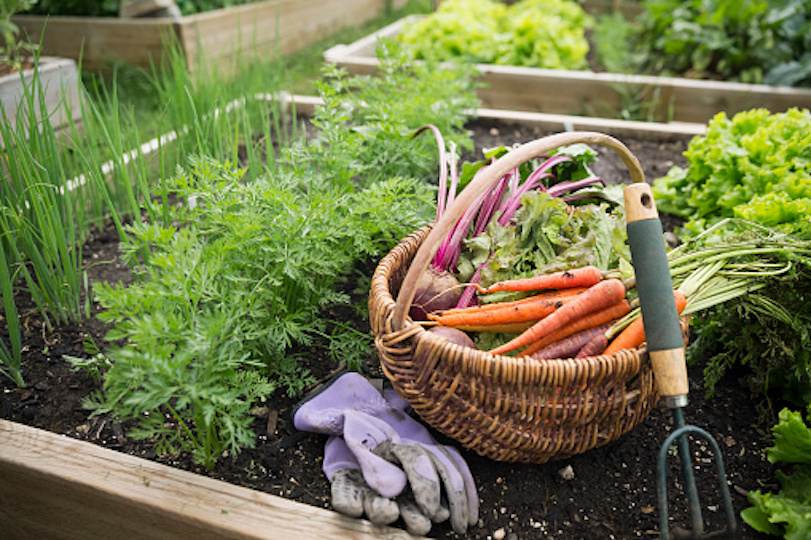Plants are the new people. They seem to have definite preferences when it comes to the company they keep and even exhibit noticeable aversion to certain members of their society. Not very surprising after all, since had successfully colonized the earth, long before we came along and started ‘civilizing’ them.
For gardening success, however, it’s worth noting the plant companions and enemies and design your garden accordingly. Some of the successful crop combinations, such as the ‘3 sisters’ of the early North American farmers are well known. Others have been painstakingly derived by crop researchers and farmers through careful observation.
Carrots
Friends: Beans, peas, cauliflower, broccoli
Foes: Dill, tomatoes
Beans
Friends: Cauliflower, broccoli, cucumber tomatoes
Foes: Onion, garlic, chines, peppers
Tomatoes
Friends: Beans, cucumber, onion, garlic, chives
Foes: Cauliflower, broccoli, corn, dill
Peppers
Friends: Cucumber, tomatoes, carrots
Foes: Cauliflower, broccoli, beans
Squash
Friends: Peppers, corn, lettuce, melon
Foes: Broccoli, cauliflower
Corn
Friends: Beans, peas, cucumber, melon, sunflower
Foes: Tomatoes
Have a list of other known plant companions and plant enemies for ready reference. In addition, the following tips will help you plan your garden for high yield.
Grow deep-rooted plants near shallow-rooted ones
Some plants (dicots) have a tap root system that penetrates the deep layers of soil and brings up nutrients. On the other hand, monocots such as cereal plants, onions etc., have a fibrous root system that spreads around closer to the soil surface.
Alternate fast growers with slow growers
Nutrient requirement of plants differs at different stages of their
growth. While juvenile plants focus on enlarging their size, mature plants concentrate on producing flowers and fruit, so competition for the same nutrients is avoided.
Similarly, fast growers finish their life cycle quickly and can be harvested before their companions need more space to grow and spread out. When cauliflower is interplanted with scallions, the latter can be harvested well before the cauliflower head
starts enlarging.
Plant pollinator-attracting flowers with fruit plants
Yields of vegetables and fruit substantially increase when pollinators are around. This is true even for self-pollinating varieties. Plants cosmos, marigold, sunflower, lavender, catnip, dill and borage between rows of vegetables attract bees and butterflies.
Plant insect-repelling herbs in the vegetable patch
Some strong smelling herbs act as insect repellants and offer some protection to other vegetables planted around them. Garlic and onions are welcome companions to broccoli, cauliflower, and lettuce. But that doesn’t mean they are appreciated everywhere. Beans and peas hate to have members of onion family near them.
Avoid planting members of the same family together
Members of the same family often have similar nutritional needs.
Moreover, they are usually prone to the same diseases and pests.
Therefore, it’s best to avoid planting cabbage, cauliflower, broccoli, and other cruciferous vegetables in the same patch.
Nightshade family members potato, tomato, and eggplant should also be planted away from one another.
Avoid planting together plants that compete for nutrients
Competition for nutrients is one of the main reasons for vegetable
crops failing to do well. Avoid large patches of a single plant or those similar in nature. For instance, all leafy vegetables need high amounts of potassium, so the lack of this nutrient can stunt their growth.
Avoid hostile plants in the garden
Some plants produce toxic substances that prevent or retard the
growth of others anywhere near them. For example, the toxicity
(allelopathy) of black walnut trees had been described over two
thousand years ago. It is particularly toxic to plants of the nightshade family, such as tomatoes and potatoes. Fennel also shows wide-ranging allelopathy, so avoid planting it near your vegetables.
Keep a plant diary and note down successful combinations
If you grow a lot of different plants in your garden, you will probably find that some companion plantings don’t really work for you. You may also discover some new ones that seem to work.
Observation is the key. Share your ideas with fellow gardeners and let them try out the combinations.
-Susan Patterson



